
STOMPer ramram is desperately looking for his pet lory, Rambo. It flew away on Sunday (18 April) at about 10am.
The STOMPer said in an email:
"Rambo, my lory flew away on Sunday (18 April), at around 10am in the area of Tampines Street 83.
"If you see him, please call me at [censored].
"I'm desperately looking for him."
Rambo is probably a black-capped lory (Lorius lory), a species native to New Guinea and surrounding islands.
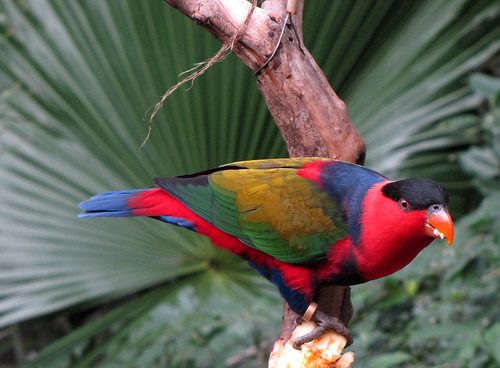
(Photo by jormungund)
If this particular bird is not retrieved, and manages to survive in the wild, it will add to the growing list of exotic parrots recorded in Singapore. So far, there is only 1 record of black-capped lory in Singapore, an individual seen at the Singapore Botanic Gardens in 2000.
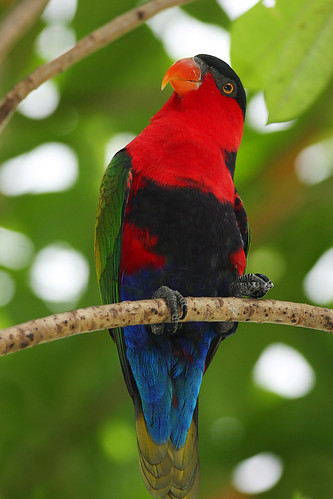
(Photo by kampang)
While only a small handful of non-native parrots have established breeding populations here in Singapore, there is always the chance that for other species, enough individuals may escape to eventually form a breeding pair. Parrots are highly popular as pets, and combined with the number of captive wildlife facilities we have here, escapes are more or less inevitable. What matters is whether enough birds escape to reach critical mass, such that the birds are able to breed and form a self-sustaining population.
This has happened with the rainbow lorikeet (Trichoglossus haematodus), which has been recorded breeding in Singapore.
Originally native to a large area of Australia, Maluku islands, New Guinea, New Caledonia, Solomon Islands and Vanuatu, the rainbow lorikeet is now considered a fairly common introduced resident.The Bird Ecology Study Group dedicated a short series of posts on the rainbow lorikeet, its status as a pest in Western Australia (where it is not native), and the possibility of it becoming a pest in Singapore.
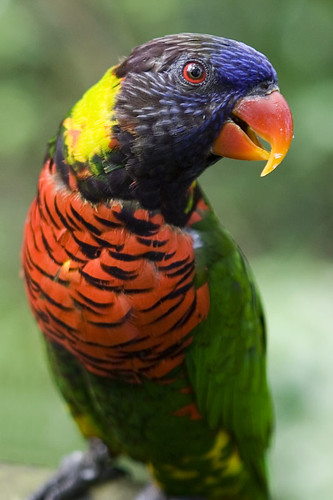
(Photo by air17)
Lories and lorikeets are characterised by the unique brush-tipped tongue, which they use for feeding on nectar and soft fruits. The group as a whole is native to Wallacea, New Guinea, Polynesia and Australia.
Besides the black-capped lory and rainbow lorikeet, the chattering lory (Lorius garrulus) from the northern Maluku islands has also been recorded in Singapore, with an adult female seen at the grounds of Singapore General Hospital in 1951.
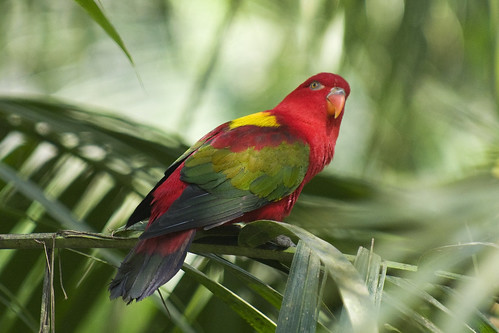
(Photo by gwashley)
The red lory (Eos bornea), which hails from the southern Maluku islands, is present in sufficient numbers to be considered a common escapee throughout Singapore. Sightings are concentrated around the Botanic Gardens and the vicinity of Bukit Timah Road, Central Catchment Nature Reserve and Sentosa; sightings elsewhere have been one-off and are likely to be fresh escapees. The first record is of a pair seen at Woodleigh Park in 1987. Breeding is suspected.
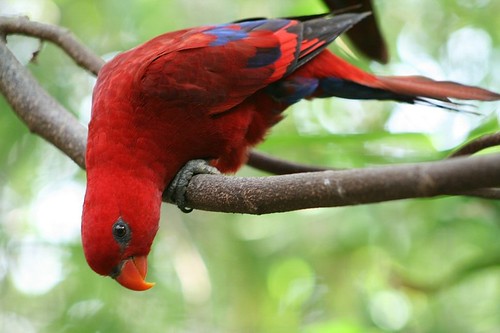
(Photo by ♥ Airey)
One of the photos in this post not only shows a record of a red lory in Singapore, but also indicates the presence of the dusky lory (Pseudeos fuscata) from New Guinea in Singapore.
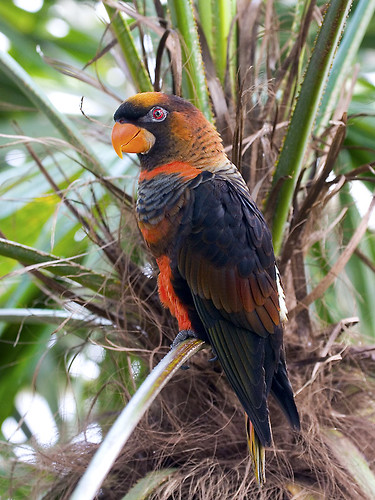
(Photo by sypix)
One of the comments also reveals that mixed flocks of lories have been seen in Singapore, comprising a mixture of species such as red lory, dusky lory, blue-eared lory (Eos semilarvata), blue-streaked lory (Eos reticulata) and violet-necked lory (Eos squamata).
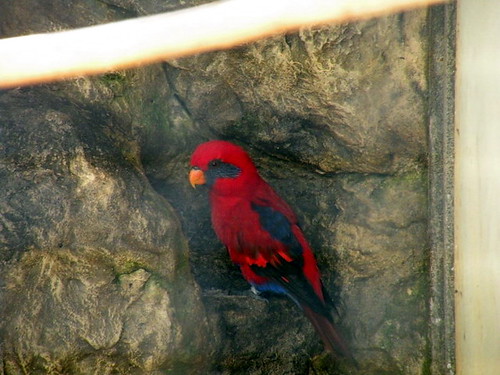
Blue-eared lory, endemic to the island of Seram in the southern Maluku islands;
(Photo by Carlos Urdiales)
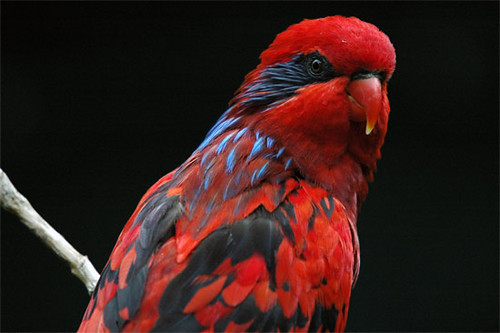
Blue-streaked lory, a species native to the Tanimbar islands;
(Photo by allereb)
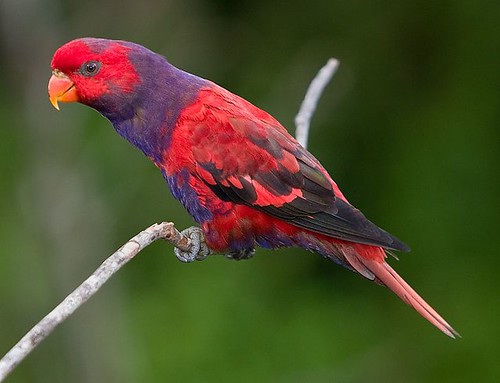
Violet-necked lory, native to northern Maluku and Raja Ampat islands;
(Photo by Saad1995)
These exotic birds are colourful and endearing, but it remains to be seen if they pose any threat to native birds, especially where it comes to competition for food and nest-holes.